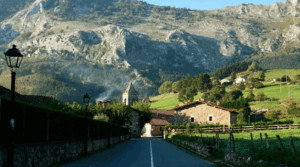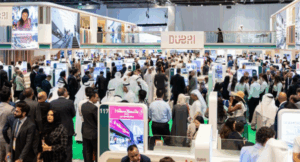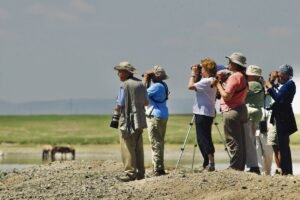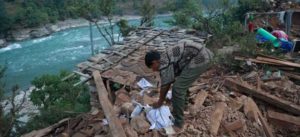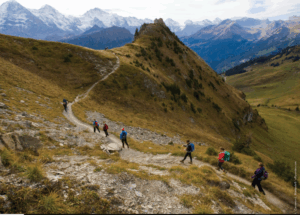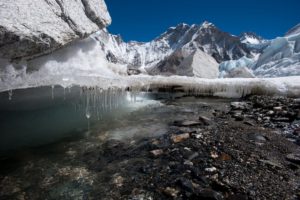Nepal’s Peace Process
Nepal’s peace process has moved into a phase of definitive progress. More than five years after the ceasefire, the parties have reached a deal on the Maoist fighters, who will leave the cantonments and enter the army or civilian life. An unofficial deal sets out power-sharing arrangements until the next election. The parties are focusing on the critical task of writing a new constitution, which promises a deep restructuring of the state to become more representative and decentralised. Challenges remain, including from continuously evolving coalition dynamics and divisions within parties. There will also have to be further discussions on the combatants. As the parties discuss federalism, which of all peace process issues goes most to the heart of ordinary Nepalis’ expectations and anxieties, groups within and outside the Constituent Assembly will see their options narrow, which could strain the process. Yet, this is still the best chance the parties have had to reach formal closure on the war and to institute some of the fundamental changes they promised, provided they have the courage to make far-sighted compromises.
The breakthrough on 1 November was the result of a series of realignments between many political leaders and factions of parties, which strengthened the futures of certain individuals and acknowledged their political lines. The major players also had few unused tools left in the negotiating process, and gratuitous inflexibility and stalling had run their course as bargaining tactics. Major power centres in all three parties, including a dogmatic faction of the Maoists, resent having been left out of the talks. But while they can obstruct and slow the process, they cannot derail it. A consensus government will have to be formed sooner or later, though it is unclear whether the present government will need to resign or whether the opposition will join in.
Power-sharing remains the most tangible dividend coming out of the peace process to date, though there was no mention of it in the November 2006 Comprehensive Peace Agreement (CPA). The formation of a Maoist-led government in August 2011 was the first factor that made progress possible. Without that, the party would have been reluctant to give up its army. Following that was the Maoists’ willingness to unofficially accept the main opposition party, the Nepali Congress (NC), as leader of the post-constitution government to oversee the next election, which should take place some months after the new constitution is adopted. The Maoists’ main coalition partner, the Samyukta Loktantrik Madhesi Morcha (Morcha), an alliance of five Madhes-based parties, has often been seen as fractious and anti-Maoist, but the strength of the front and the new government challenges that perception. Finally, there has been a gradual shift in India’s policy line in 2011, reversing an often hostile approach to the Maoists in favour of accommodation and cooperation.
After the 1 November agreement, the Maoist combatants were surveyed and chose either integration into the national army or voluntary retirement with a cash package. More fighters chose integration into the Nepal Army (NA) than the 6,500 allowed by the deal. This opens up another negotiation on the final number. Combatants likewise showed themselves to be unhappy about decisions made on individual qualifications for entry into the NA. Ranks have not been decided yet either. The special concerns of fighters with disabilities will also have to be addressed. Discussions could be protracted, but are not likely to derail the constitution writing process.
The term of the Constituent Assembly (CA) was renewed for six months, from 1 December, and the state restructuring commission, controversial but mandated by the interim constitution, was formed. The commission should build on proposals already prepared in the CA and also provide recommendations to that body. Its composition, however, suggests that critical decisions will be taken elsewhere, at the highest political level. Indeed, senior leaders are on track to negotiate compromises on the proposed federal states and system. They will have to balance acknowledging historical identities and discrimination and the rights of Nepal’s many ethnic, caste and linguistic groups.
The manner in which negotiations take place matters as much as the outcome. Historically marginalised communities, their representatives in mainstream parties and other ethnic formations have to be engaged, rather than simply be informed of decisions. Centralised, top-down decisions on federalism cannot be sold easily outside Kathmandu, where identity-based groups and sceptics of federalism have been mobilising. There is supposed to be public consultation on proposed constitutional provisions. Rather than treat this as a formality, the parties should see it as a way to increase the buy-in of various groups.
As the future landscape becomes clearer, resistance could well come from traditionally powerful constituencies that are outside the CA and see the proposed changes as a zero-sum game, including a mix of anti-federalists, Hindu groups that oppose secularism and some royalists. The parties in the CA and their factions will also look to extract the most from the process, and parliamentary parties on the right are regrouping. For many, the temptation could be to not negotiate, but instead to sharpen social polarisation along the divisions the peace process seeks to narrow: ethnic, religious, cultural, regional and class.
The peace process has informally come to mean only the question of the Maoist fighters, rather than the whole of the CPA. Politicians do regard the constitution as a matter of urgency, but they are also exhausted and want to see the process quickly concluded, so Nepal can go back to business as usual. The commitment to democratise the Nepal Army has already been dropped. The commission on land reform is a dead-end. The issue of justice for war-era abuses continues to be defined by the lack of incentive for all actors to deal with it. These issues and the complexities of federalism will not lose relevance simply because the mainstream parties decide to ignore them. Whether or not they prove to be drivers of mass mobilisation or violence in the coming months, they will be critical ahead of the next general election. Nepal’s political class needs to make some difficult decisions rather quickly, so as to ensure its own relevance. -Int.Crisis Group


